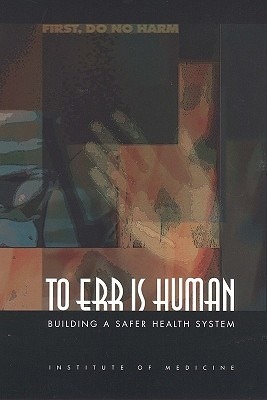Kindle Notes & Highlights
at least 44,000 Americans die each year as a result of medical errors. 3 The results of the New York Study suggest the number may be as high as 98,000.4
Errors are also costly in terms of loss of trust in the system by patients and diminished satisfaction by both patients and health professionals.
Health care professionals pay with loss of morale and frustration at not being able to provide the best care possible.
Providers also perceive the medical liability system as a serious impediment to systematic efforts to uncover and learn from errors.
Given current knowledge about the magnitude of the problem, the committee believes it would be irresponsible to expect anything less than a 50 percent reduction in errors over five years. In this report, safety is defined as freedom from accidental injury.
Error is defined as the failure of a planned action to be completed as intended or the use of a wrong plan to achieve an aim.
Errors that do result in injury are sometimes called preventable adverse events. An adverse event is an injury resulting from a medical intervention, or in other words, it is not due to the underlying condition of the patient.
when an error occurs, blaming an individual does little to make the system safer and prevent someone else from committing the same error.
RECOMMENDATION 6.1 Congress should pass legislation to extend peer review protections to data related to patient safety and quality improvement that are collected and analyzed-by health care organizations for internal use or shared with others solely for purposes of improving safety and quality.
outdated/observed recommendation— see: the patient safety and quality improvement act of 2005 (PSQUIA) ; reflected in johns hopkins all children’s confidential HERO reports.


